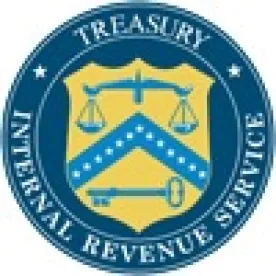For the third time in less than three years, the IRS has issued major guidance – Revenue Procedure 2017-13 — on the safe harbor rules for management or service contracts to avoid private business use. The new revenue procedure follows closely behind the total rewrite of the safe harbor rules that the IRS issued as Rev. Proc. 2016-44 in August 2016. A cynic might think the IRS was just looking for an excuse to renumber the management contract revenue procedure as 97-13 plus 20 years. But in fact there are some important modifications in the new revenue procedure.
The 2017-13 changes from 2016-44 are largely responsive to comments submitted by NABL on November 22. Probably most interesting is to note the NABL comments that the IRS did not accept. Here’s a rundown of the major changes.
Clarification that Certain “Old School” Compensation Forms Don’t Provide a Share of Net Profits Even If Service Provider Bears Operating Expenses of the Managed Property
NABL requested, and the IRS accommodated with, a clarification that a capitation fee, a periodic fixed fee, a per unit fee and an incentive fee as described in 2017-13 (generally a qualitative incentive fee), or any combination of these, does not provide a prohibited share of net profits or violate the prohibition against the service provider bearing a share of net losses, even if the service provider pays expenses of operating the managed property and is not reimbursed. These expenses presumably include, for example, employee costs, utilities, supplies, etc.
Noteworthy for its absence from the listed compensation arrangements is a share of gross profits. This is consistent with the NABL comments, which did not include a share of gross profits in combination with the service provider paying expenses of operating the managed property. However, NABL also suggested a rule clarifying that the above profits or losses prohibition is not violated in the case of the traditional forms of compensation listed in the above paragraph, as well as a share of gross revenues or expenses, regardless of whether “the expenses incurred by the service provider in managing the managed property or otherwise providing its services, such as salaries or supplies, to the qualified user (‘internal expenses’) are reimbursed to the service provider.” This comment was not accepted by the IRS.
Does all of the above suggest that if a service provider receives a share of gross revenues and is required to pay some expenses of operating the facility, the service provider is necessarily receiving a share of net profits? I don’t think it’s that simple. Such a broad conclusion could virtually eliminate the ability ever to compensate based on a share of gross revenues. This is because a service provider will almost always bear some costs – its own costs, and some of those costs will almost certainly be costs of operating the property. For example, the manager will have employee costs, some of which employees – or at least the top management person – will provide management or other services with respect to the managed facility. That person’s compensation would thus seem to be an operating cost of the managed property but surely that compensation can’t disqualify the contract from the safe harbor. If it did, how could a share of gross revenues ever be permitted? And if the manager is permitted to receive a share of gross profits and pay the operating expense of the management person’s compensation, why not also the compensation of all other employees working at the managed facility (if the management contract requires the manager to provide all employees)? It has never been entirely clear how this issue of a manager paying operating costs is to be resolved, and unfortunately it remains unclear.
Timing of Compensation Payments
Rev. Proc. 2016-44 required that, to ensure that compensation was not based on a share of net profits, the timing of compensation payments not be contingent on net profits or net losses from operations. This left significant questions, particularly in light of several favorable letter rulings permitting some degree of timing contingency. Again largely consistent with the NABL comments, 2017-13 permits payment deferral resulting from insufficient net cash flows from operations provided the contract: (1) requires payment of compensation at least annually, (2) imposes reasonable consequences for late payment, such as reasonable interest charges or late payment fees, and (3) requires payment of the deferred compensation and interest/fees within five years after the original due date. This is a helpful and important addition to the safe harbor rules. Of course it leaves the question of what happens if cash flows turn out to be insufficient to pay the deferred compensation after five years. Presumably while the contract cannot by its terms permit a longer deferral, the parties at that time can agree upon further deferrals, or the manager can seek remedies for breach of contract.
Permitted Term of Contract
Rev. Proc. 2016-44 limited the term of a qualifying management agreement to the lesser of 30 years or 80% of the weighted average reasonably expected economic life of the managed property, disregarding land no matter how much land was included as part of the managed property. This term provision was one of the most important advances – maybe the most important – of Rev. Proc. 2016-44. However, the useful life limitation, which took on greatly enhanced importance because the alternative limit of 30 years would rarely be a problem, raised some concerns.
The IRS addressed one of these concerns. Rev. Proc. 2017-13 newly provides, consistently with IRC section 147(b)(3)(B)(ii), that land will be treated as having an economic life of 30 years if 25 percent or more of the net proceeds of the issue that finances the managed property is used to finance land. This is a narrower fix than requested by NABL, which requested that land always be taken into account with an assumed 30-year life.
The IRS failed to reflect several other NABL comments regarding this term limit. Two of the comments – that the determination of economic life be based on facts at the time the contract is entered and that the economic life determination be based on all managed property, not just that financed with the bonds – may not be reflected in changes because the IRS may have concluded that those points were sufficiently clear in the prior text, which was maintained. Another NABL comment that was not accepted suggested that the 80% limit not be applied to short-term contracts. The rationale was that the 80% limit could force a qualified user and manager to enter into a series of shorter and shorter contracts as the end of the property’s average useful life is approached (remember “limits” from high school math?). This request was rejected without comment.
While the differences between Rev. Proc. 2016-44 and 2017-13 are far from seismic, the changes are essentially all positive and will be helpful clarifications where applicable. And importantly, 2017-13 will be much easier to remember than 2016-44.




 />i
/>i


